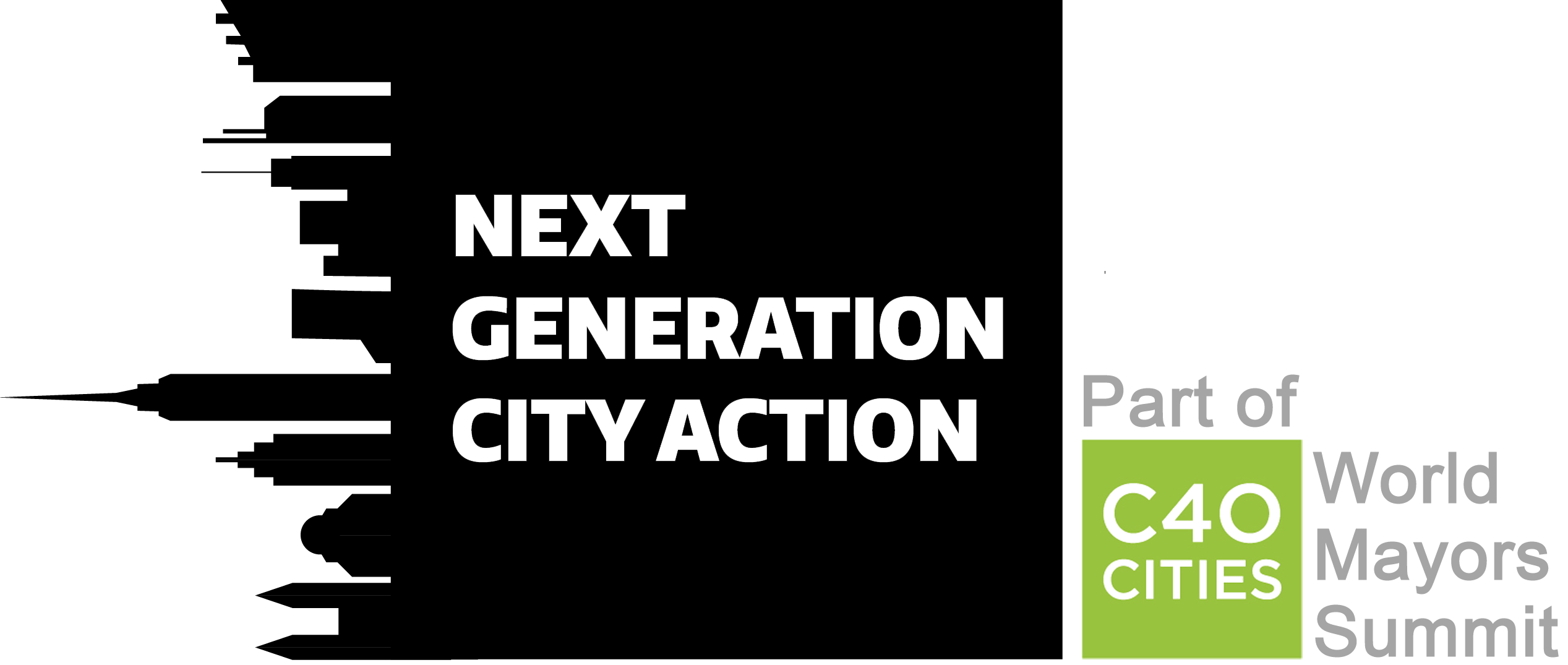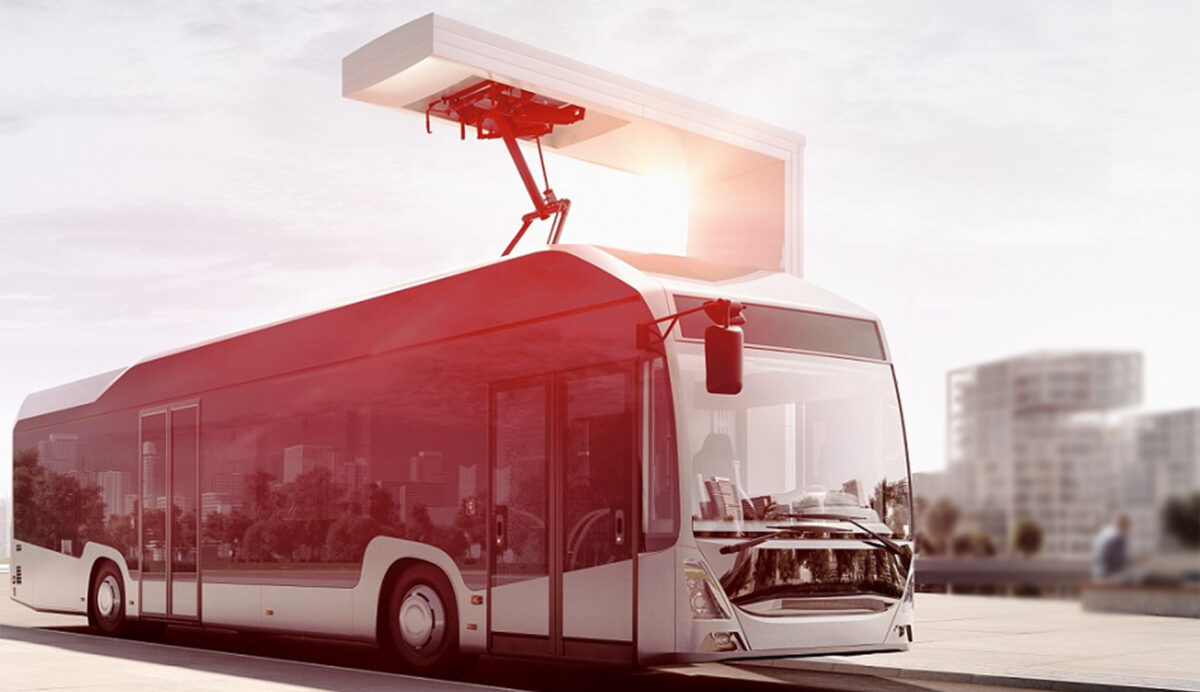
About Mexico
The city of Mexico is the capital of Mexico with the largest number of populations from the Northern American cities, located in the valley of Mexico. It has 16 boroughs. Due to its tropical location and high elevation (2,240m), the city has a subtropical highland climate. The average annual temperature varies from 12 to 16 °C depending on the altitudes.
In addition to being a home for 8.9 million people nested in 1,485 sq KM, Mexico City is one of the most important cultural and financial centers in the Americas. This makes it to be highly active in terms of buildings,industries and transportation which are causes of pollution and climate change. There are 50,000 industries and 4 million vehicles operating in and around the metropolitan area.

It is known that the city has become a model for drastically lowering pollution levels after its designation as the most polluted cities in 1990s. It is now on the rank of 38th.
Current projects
Although an increase of 33% was observed in the number of EV sold out in Mexico when compared with the last year, it is still below 1% (0.7%) in relation to the entire automotive market.
Electric Vehicles Market in Mexico
There are over 500 electric vehicles and 15,000 hybrid cars in Mexico with 900 charging stations. The main car brands are Nissan Leaf, Renault Twizy, BMW i3, Tesla S, X, M3, Chevrolet Bolt EV, and Zacua M2 (Mexican)

City Challenge
Scale up the city’s Electric Mobility in terms of infrastructure and financing models to reduce the emission of pollutants which is currently an issue in the city. Creating interest in the partners and citizens to invest on EV by providing strategies which will benefit the city economically, socially and environmentally. Mexico’s electricity reform and momentum which focuses on addressing climate-change gives an opportunity to set the stage for the long-term adoption of electric vehicles. Electric vehicles are part of a larger ecosystem of sustainable transport and cleaner energy generation, which is also called for in Mexico’s climate change law.
Solution 1
Power Transfer from Overhead lines
Technology description
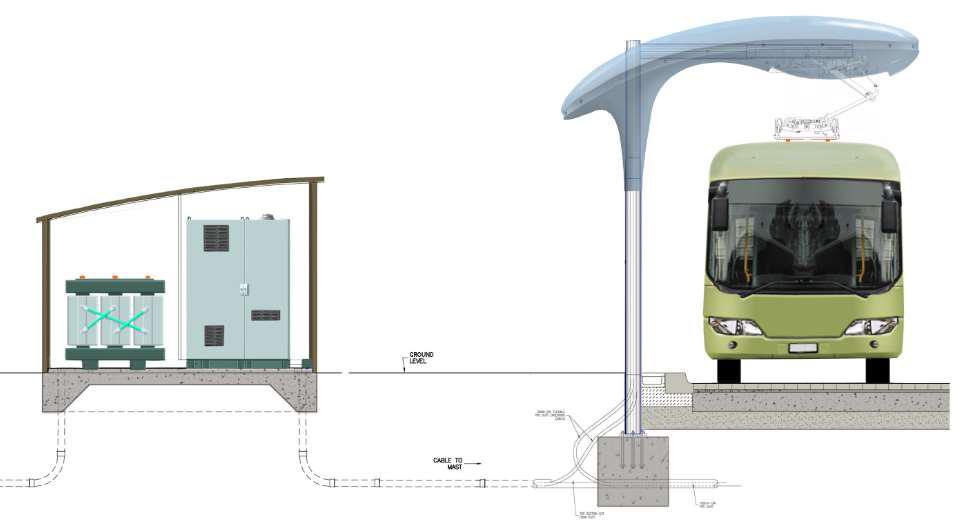
There are three variations of Conductive rail ERS: (1) rails embedded in pavement, (2) on top of the pavement and rail attached to a crash guard. All three concepts use an intelligent pantograph that extends from either the vehicle underside, rear or side sill to connect to the electrified rail. Rails are typically segmented into short lengths to increase safety and minimize the risk of electrocution. A vehicle equipped with ERS components detect the rails presence and communicates with the infrastructure to
authenticate and debit the user according to their energy consumption. Once aligned and authorized, the pantograph extends to connect to the rails, allowing the vehicle to charge. Depending on the manufacturer power can be used to directly drive the vehicles propulsion unit or charge the battery for later use. Once charging is completed, or should
evasive/overtaking manoeuvres be performed the pantograph can detach from the rail immediately.
Inductive (wireless)
Technology description
There are many variations of dynamic inductive power transfer systems; however all function under the same principles electromagnetic field resonance between two coils. Primary coil segments are placed beneath the pavement surface, which are connected to roadside transformers feeding power from the grid. Coil segments can be 10-50m in length, separated by a witching unit that controls power to each segment as the vehicle passes. Vehicles are equipped with a secondary coil (fitted to the underside), control electronics, BMU, and interface. The action of the two coils passing over each other induces the electromagnetic current between coils, allowing power to be transferred at specific frequencies (typically 85kHz). Power is then stored in the on-board batteries for later use. V2I communications facilitate user authentication and establish debiting. Coils are
typically made from litz cable, ferromagnetic material (which directs, strengthens and shapes the magnetic flux) and an aluminium shielding layer (to prevent EMF leakage). Power can be transferred across variable air gaps (typically 15-25cm). Ensuring alignment between coils is a critical factor for efficient transfer.
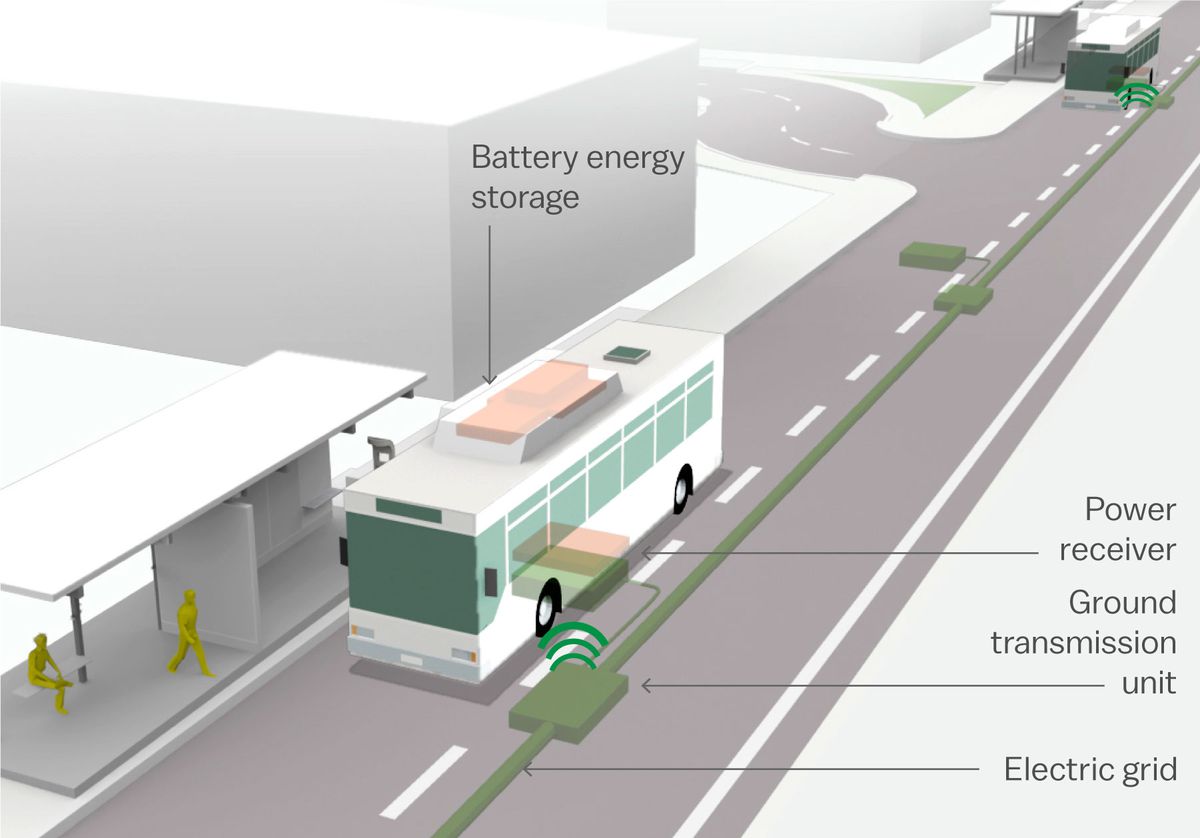
General description of concept
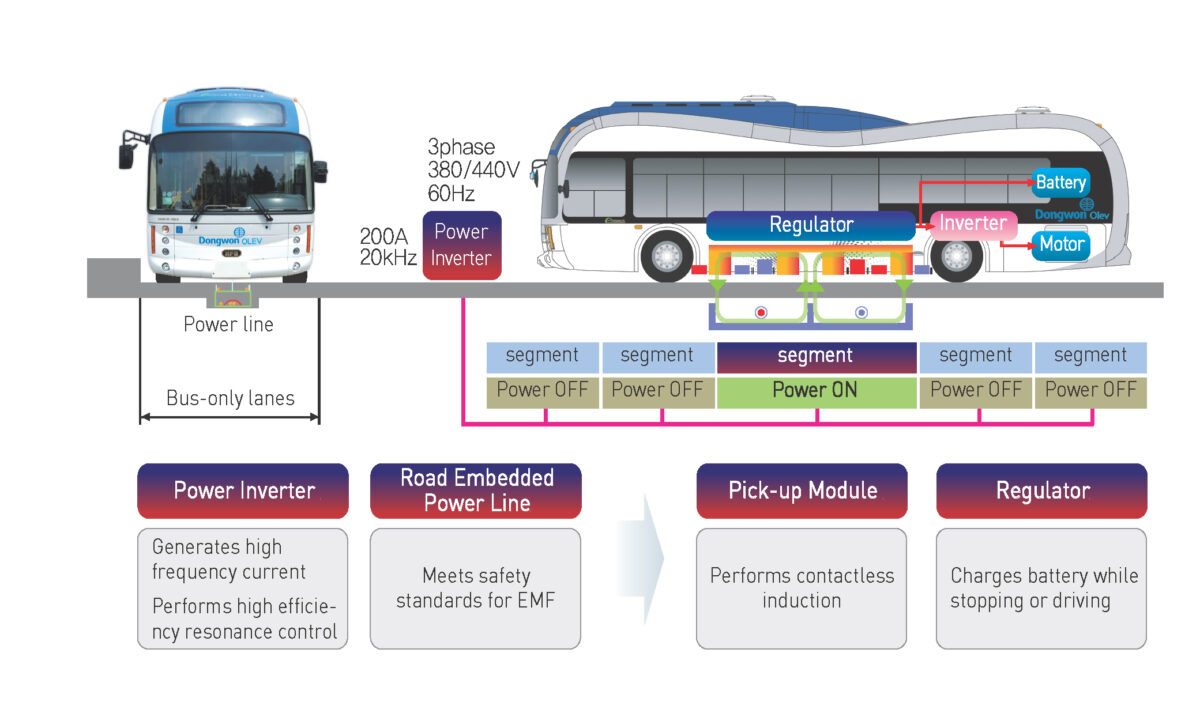
Installation and Maintenance
(1) charge pad (primary coil), (2) track supply, (3) monitoring unit, (4) cooling unit, (5) PFC stage, (6) inverter module.

Layout A and B offer maximum discretion and minimum visibility and would be typically used at bus stops, terminus points and at junctions. Layout C houses the track supply, power electronics, and cooling unit all in one space. This layout would be most suitable for applications where deep excavations are not possible and where roadside space
permits a larger housing unit to be installed. It is also possible to connect multiple charge pads to one set of power electronics so two buses can charge simultaneously.
Solution 2
Solar electric bus and solar parking
- Building car body with solar panel and converting bus stops and parking shad with solar panel.
- Mechanism 1
- Building the bus exterior body part or changing the body part with solar panel so that it can self-sustain the energy source.

The mechanism how this solar vehicle operate is that, sun is the unlimited source for the light energy (Energy source).the solar panel Converts solar energy to electrical energy then power tracker Deliver it either to the batteries for storage or to the motor controller for propulsion. The battery store the energy And motor controller Take a signal representing the demanded speed, and to drive a motor at that speed.
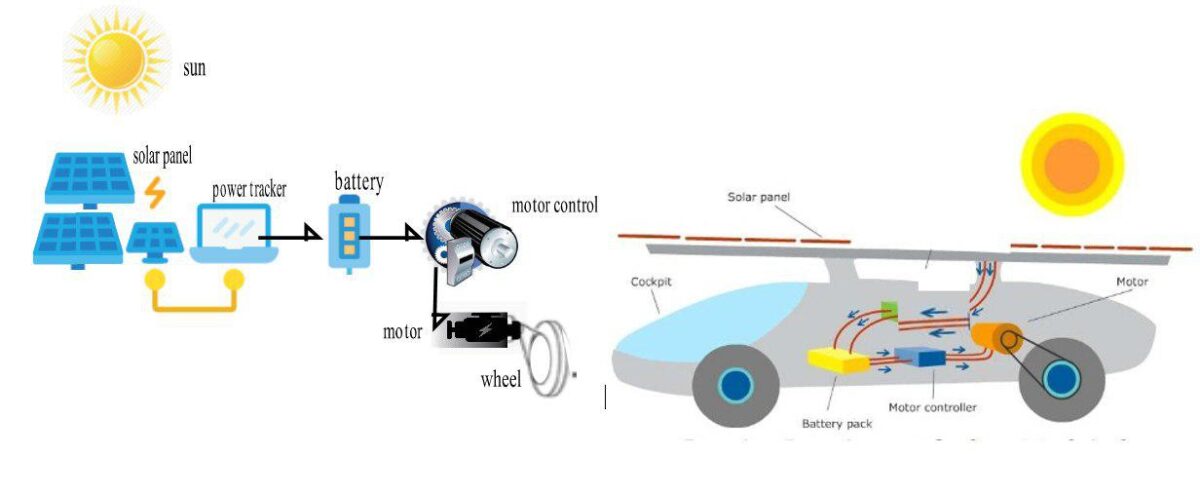
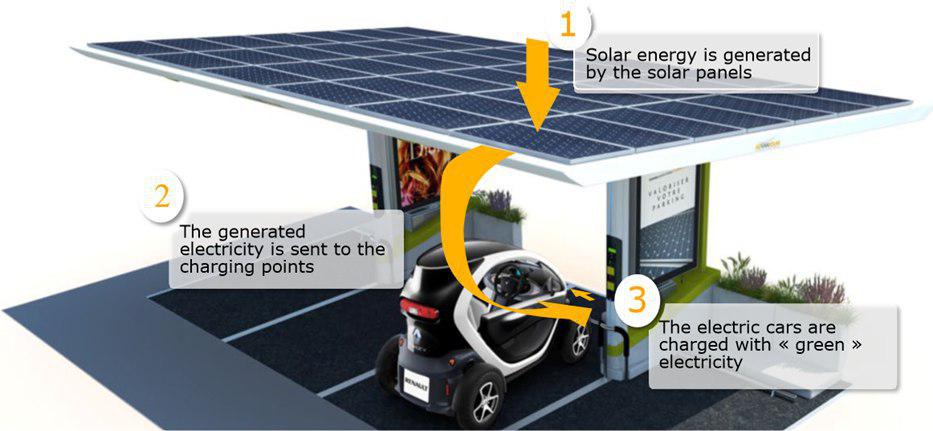
Model of Financing
The challenge faced by the city currently is that the Electric buses are expensive and couldn’t afford for the large scale purchase of E-buses. In order to solve this a financial model
adopted from the experience of different cities is taken and proposed.
- Operational savings: 4% maintenance and 27% for fuel (King country Seattle)
- No-cost lease for land where charging stations are located (Foothill, California)
- Clean bus technology fund at the national level, used in local level (London, U.K) (Xiangyi Li, 2018)
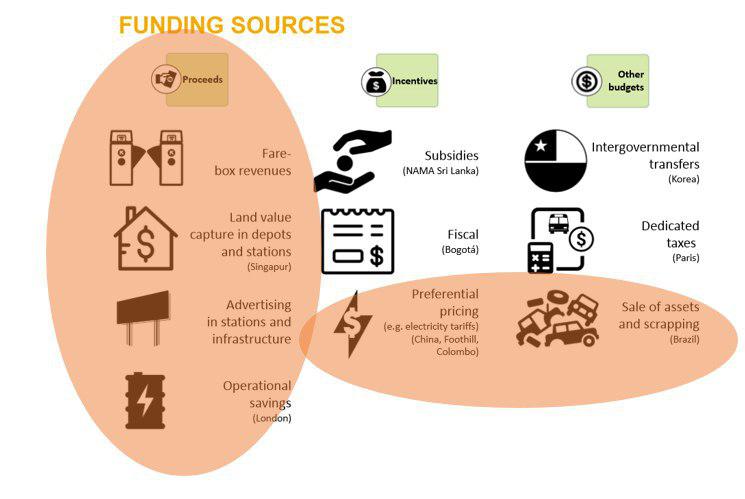
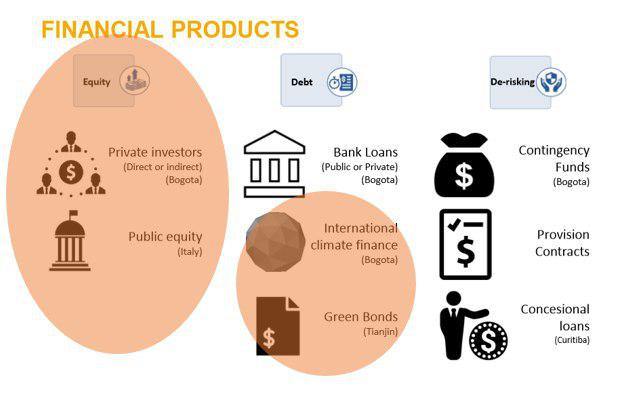
Policy and Legal Framework
The Mexican legal system does not have specific legislation or by-laws for EVs. However, general regulations concerning vehicle weight, security measures and other requirements are applicable to EVs.Policy and legal framework are a key element to achieve the desired goal on EV acceleration in Mexico City. Mexico’s climate legislation targets
emissions cuts of 50% by 2050 (from 2000 levels) and 35% renewable energy by 2024.
- In order to overcome the city challenge the federal taxation law on EV should free their tax or exemption by50% of sale and import.
- Enforcing, Zoning and building codes by the law, to include charging infrastructure on their building fronts which can be accessible by the electric buses and other EV. The City should streamline permitting processes for installation of charging infrastructure in public areas.
- Until 2024, Oil and petroleum company’s should alter their business in to renewable energy supply like fast charging stations, battery swiping area and battery store for electric bus beside fuel based vehicles.
- Old and high carbon emitting vehicles should be replaced or became out of figure.
Incentives
Awareness and promotion
- Building public opinion and create knowledge about the importance with participatory events like festivals and tour organization.
- Promoting and rewarding, company’s which use electric buses for company use or service.
Monetary and non-monetary incentives
- Subsidies / tax credits for EVs
- Discounts or waivers on registration / annual taxes on EVs
- Subsidies for charging infrastructure
- Investment tax credits for charging infrastructure
- Free parking for EVs: provide designated free parking spots for EV user’s specially in public areas like Supermarkets / malls / multiplexes can also offer designated EV parking spots to attract EV users.
- Waiving congestion charges for EVs
- Electricity discounts for EV charging: provides a discount or free electricity for EV charging.
- Access to HOV lanes
Advocacy and public relations
- Demonstration projects: City governments can get involved in demonstration
projects with EV OEMs to obtain publicity and spread awareness about EVs - Advocacy by public figure: City government can get public figures –
e.g. the Mayor, etc – to get involved in EV projects or drive EVs and engage in
advocacy efforts for EV adoption.
Fiscal incentives: reduction of purchase price
- Exemption from registration tax
- VAT exemption
- Reduce annual vehicle license fee
- Reduce company car tax
Social, Economic, and Benefit
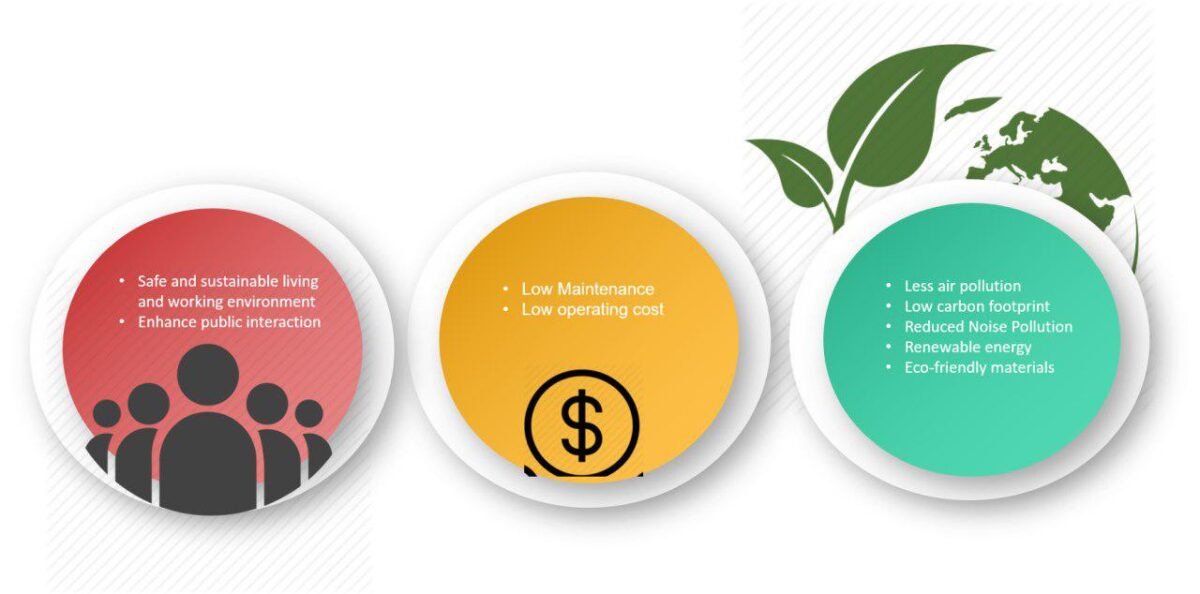
Partnership
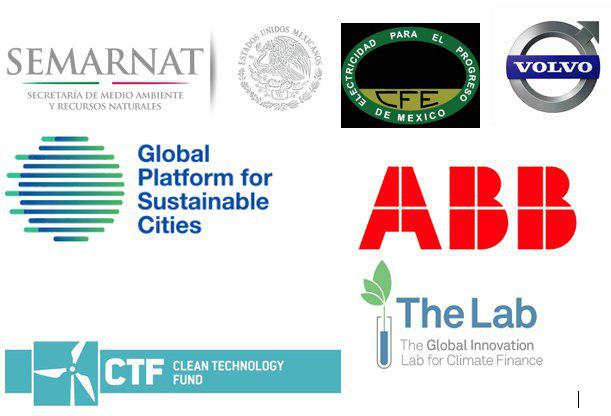
References
Charlie Simpson, E. K. (2019). Mobility 2030: Transforming the mobility landscape
Switherland: KPMG International.
Chris Zegras, J. N.
(2000). METROPOLITAN MEXICO CITY MOBILITY & AIR QUALITY. Mexico.
Clark, D. A.
(2018). The Lab: PAY AS YOU SAVE FOR CLEAN TRANSPORT. Global
Innovation Lab for climate Finance.
CV, V. S. (2013). Slide-in
Electric Road System, Inductive project report. Sweden : Scania CV.
D Bateman, D. L.
(2018). TRL ACADEMY REPORT PPR875future. United Kingdom: TRL Academy.
Martin G. H.
Gustavsson, C. B. (2017). Automatic conductive charging of electric cars. EVS
30 symposium. Stuttgart, Germany: Volvo Cars, Göteborg, Sweden.
Ramírez, S. M.
(2012). Transforming Urban Mobility in Mexico city. Mexico: ITDP and
British embassy.
Xiangyi Li, S. C.
(2018, August). Emerging trends and innovations for electric bus adoption—a
comparative case study of contracting and financing of 22 cities in the
Americas, Asia-Pacific, and Europe. ELSEVIER.
Team Members

Helen Zeray
Addis Ababa, Ethiopia
Phone no: +251960715865
Email: [email protected]
Twitter: @ZerayHelen

Yohannes Gizachew
Addis Ababa, Ethiopia
Phone No: +251922402519
Email: [email protected]
Twitter: @yoha2016

Selamawit Getahun
Addis Ababa, Ethiopia
Phone no: +251900074356
Email: [email protected]
Twitter: @selamawitgetah3
